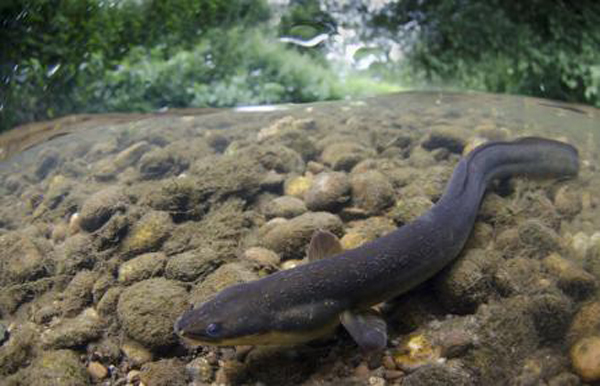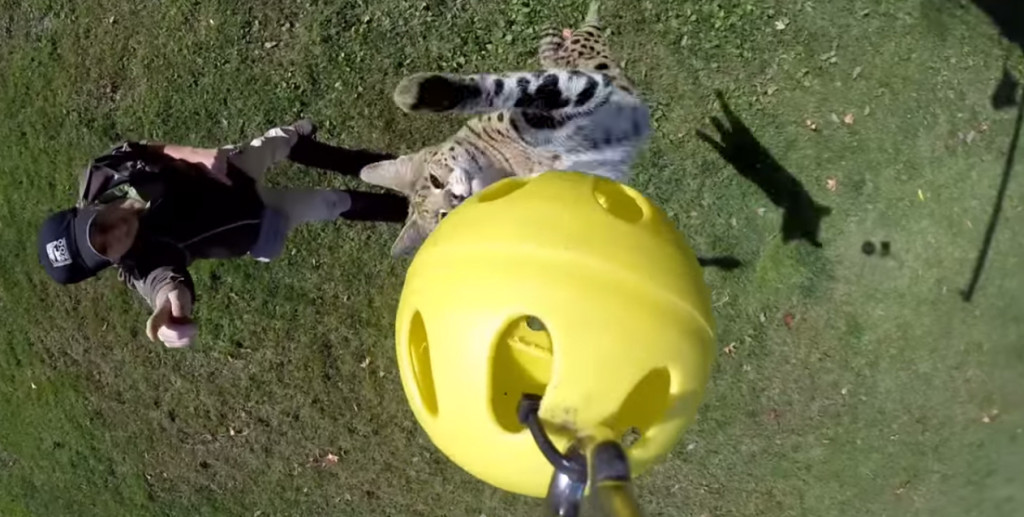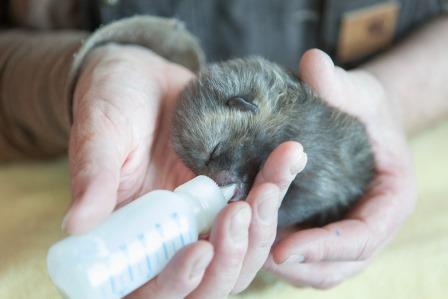Researchers have known for more than a century that European eels have a unique life story that takes them thousands of kilometres away from their childhood homes.
These eels, which are endangered, have been tracked with a history that includes offshore spawning in the Sargasso Sea about 5,000 to 7,000 km away from their juvenile and adult habitats in Europe and northern Africa.
Recently hatched eel larvae were historically collected during Danish, German and American surveys in specific areas in the southern Sargasso Sea.
During a 31-day period of March and April 2014, Danish and German research ships sampled for European eel larvae along 15 alternating transects of stations across the Sargasso Sea.
The collection of recently hatched eel larvae (≤12 mm) from 70° W and eastward to 50° W showed that the European eel had been spawning across a 2000 km wide region of the North Atlantic Ocean.
Tracked since 1920s
Historical collections made from 1921 to 2007 showed that small larvae had also previously been collected in this wide longitudinal zone, showing that the spatial extent of spawning has not diminished in recent decades, irrespective of the dramatic decline in recruitment.
The use of such a wide spawning area may be related to variations in the onset of the silver eel spawning migration, individual differences in their long-term swimming ability, or aspects of larval drift.
A team of researchers with members from Japan, Sweden, Denmark and Germany has found evidence showing that European eel spawn across a 2,000 km wide region of the North Atlantic Ocean.
In their paper published recently in Biology Letters researchers noted that historical data as far back as 1921 had found the larvae in similar parts of the ocean.
The researchers suggest that despite severe reductions in population, the European eel still spawns as far and wide as it ever did. They suggest also that their findings may contribute to a plan for preventing the eels from disappearing altogether.
The European Eel (Anguilla anguilla) is one of the animals considered to be Critically Endangered on the IUCN Red List of Threatened Species and the OSPAR Convention.
Historically, the European Eel was farmed in the UK and other parts of Europe by catching juvenile eels and raising them, according to the wildlife conservation group Manx Wildlife Trust.
The spread of this trade internationally is believed to have contributed to the decline in wild populations. Since 2009, exports outside of Europe have been banned due to concern over the decline in recruitment and stocks, however, trade continues within the EU and from non-EU countries within its range to other non-EU countries.
European Eel facts
The European Eel is one of a few species that spend most of their lives living in freshwater, but journey to saltwater in order to breed.
All European eels breed and lay their eggs in the Sargasso Sea, some 3,000 miles away in the western Atlantic.
The larvae from the newly hatched eggs head eastward across the Atlantic, increasing in size as they travel towards the coastal waters of Europe.
By the time they reach the Irish Sea they have transformed into young transparent eels known as glass eels.
When they reach freshwater in the mouth of the Island’s rivers such as the Sulby, the Neb and the Dhoo they then transform again into elvers which are yellowy/brown in colour.
From here they swim upstream into the streams and ditches where it can take between 5 to 20 years for them to mature, becoming darker in colour with white bellies.
These eels are nocturnal, burying themselves in the mud during the day and hunting at dusk.
They have a varied diet: Adults mostly feed on invertebrates, fish and scavenge on decaying fish; juveniles eat insect larvae, molluscs, worms and crustaceans.
They usually grow to about 2ft long, are remarkably agile and strong, and have even been recorded during periods of rain, or even just a heavy dew, ‘swimming’ short distances across land in order to reach ponds and lakes that are not connected to the river courses.
Remarkably as the fully grown eels become sexually mature, they start the 3,000 mile migration back down the river system, out into the Irish sea and all the way back to the Sargasso Sea in order to breed, and as a result are one of the longest distance migrants that regularly visit our island.
This long distance migration however makes them extremely vulnerable to predation, pollution, and fishing impacts.
At the same time, many of the freshwater habitats where they naturally live and grow to adults are fragile – being affected by drainage, pollution or put out of reach by river engineering structures such as weirs and sluices
Photo credit: Manx Wildlife Trust




